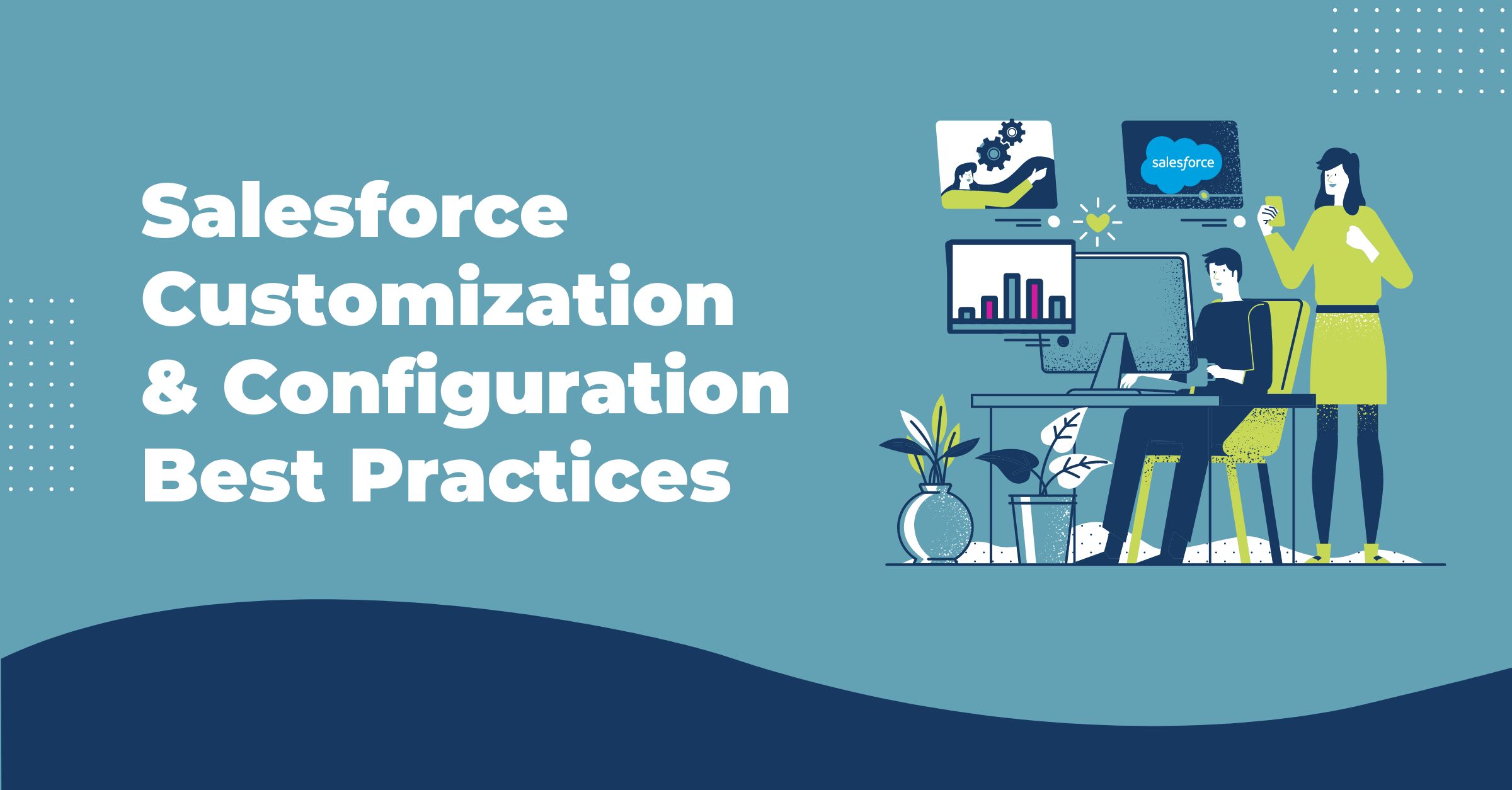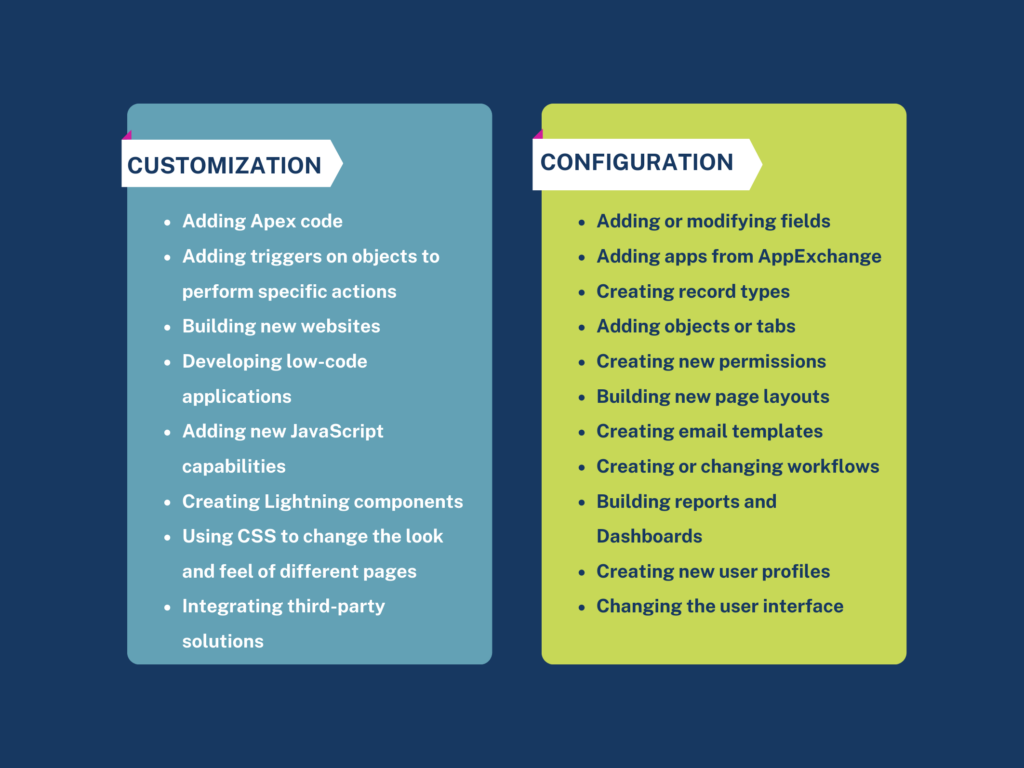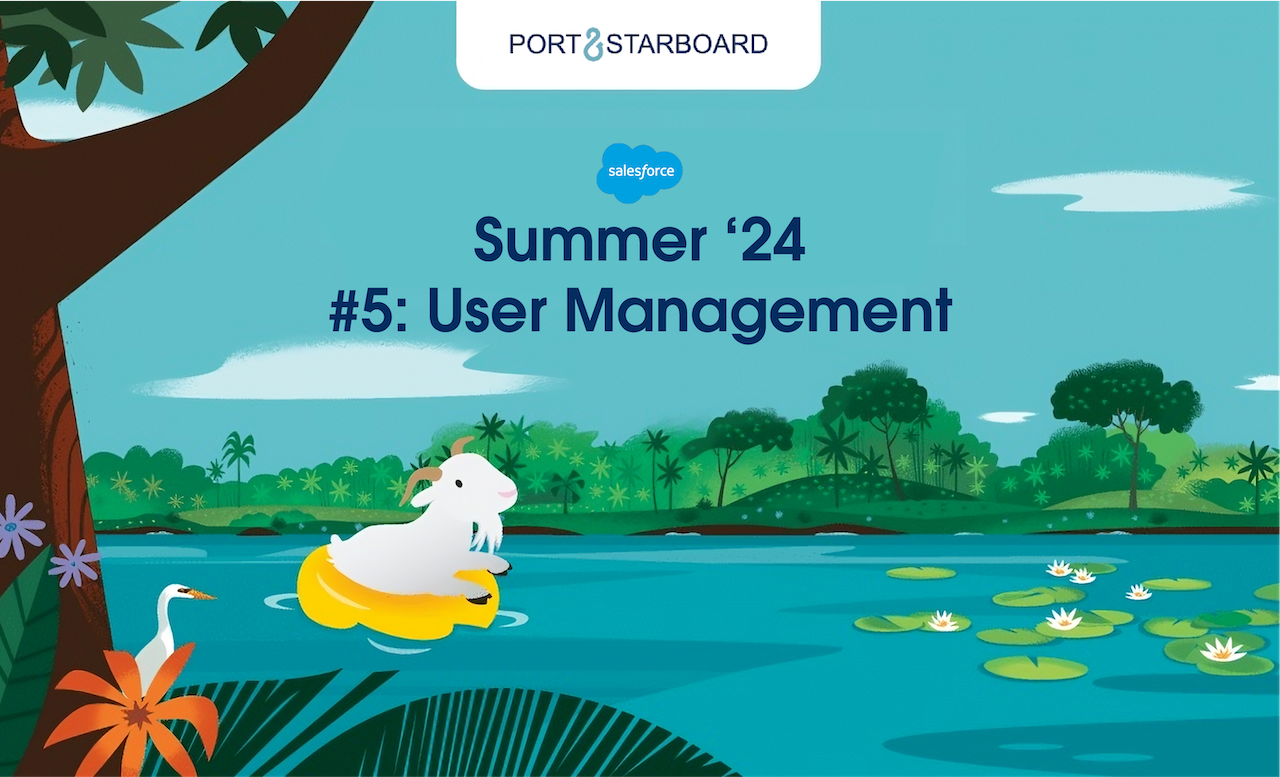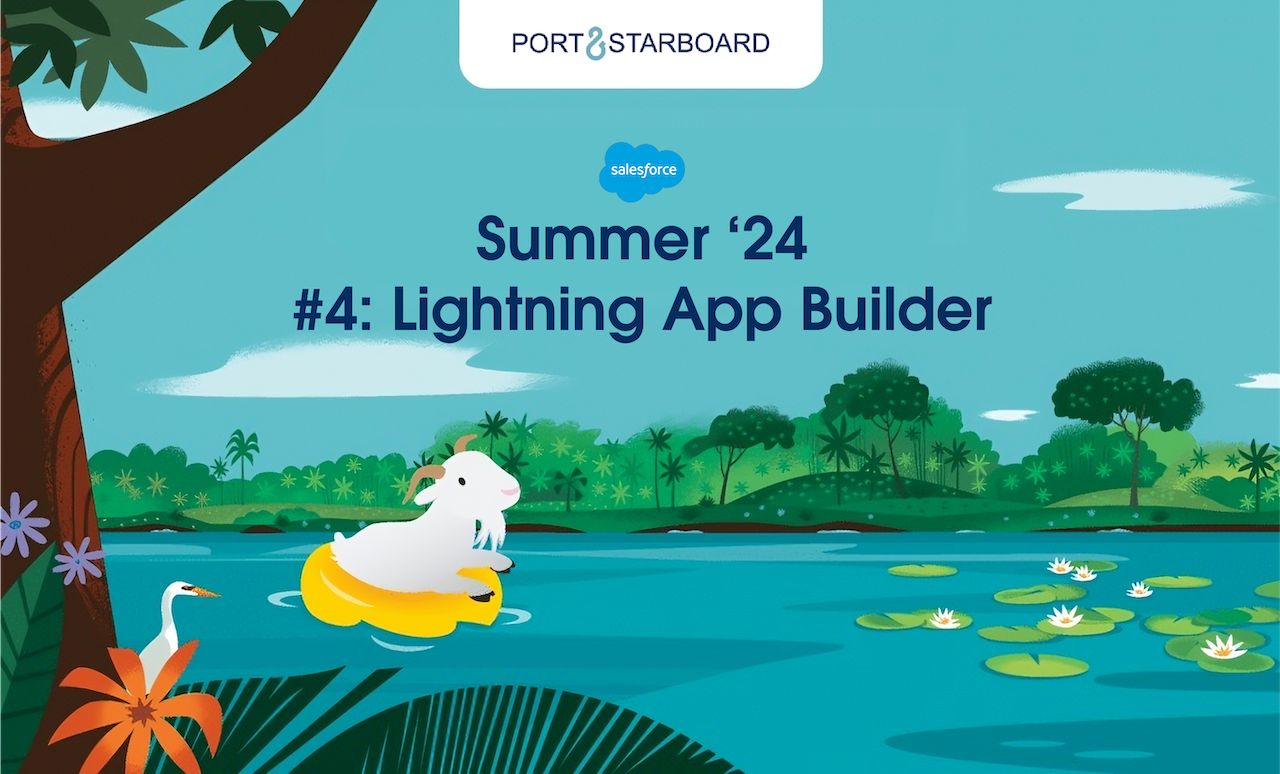Salesforce is both highly configurable and highly customizable. To use Salesforce to its full potential, you must consider your business’s unique vision, needs, and goals. While most organizations eventually require configuration and customization to make the platform work ideally for them, they typically don’t need both solutions upfront or simultaneously.
We’re here today to define both paths to help you decide which one can serve you best today – and which you could benefit from further down the road.
Configuration vs. Customization in Salesforce
The main difference between configuration and customization in Salesforce is how you use the platform. You’re using configuration if you’re performing a process or function within your current CRM system. If you’re adding new functionality or features that aren’t currently available as a default, you’re using customization.
Let’s dive a little deeper into each.
What is Salesforce configuration?
In short, Salesforce configuration uses the resources available to you by default. You can develop applications in Salesforce by selecting items within the platform rather than customizing the code to make the platform work differently for you. Develop new applications quickly and easily using the preset Salesforce user interface (UI). For example, you can add new fields to Salesforce using formulas and rules to achieve your desired outcome.
With built-in tools and features, you can boost productivity and increase conversions for your business. Salesforce configuration also allows you to support various users, grant proper access to employees, and avoid code duplication.
Examples of Salesforce Configuration
Here are several examples of Salesforce configuration:
- Adding or modifying fields
- Adding apps from AppExchange
- Creating record types
- Adding objects or tabs
- Creating new permissions
- Building new page layouts
- Creating email templates
- Creating or changing workflows
- Building reports and Dashboards
- Creating new user profiles
- Changing the user interface
Expertise Required
In general, configuration is less complex than customization. The functions and features are readily available in your current Salesforce platform. You just need to understand how to take full advantage of them.
You may need to bring in an expert to teach your team what different features do and how to use them correctly. Consider hiring a Salesforce Administrator or Consultant that knows how to use the version of Salesforce you’ve implemented (Sales Cloud, Service Cloud, etc.).
What is Salesforce customization?
Salesforce customization is adding a function or feature that isn’t already available in the application. In other words, you’re developing and coding new functionality into the CRM. You may need to customize Salesforce if the packaged version doesn’t allow you to do what you need.
Unlike configuration, which supports a wide variety of users and customers, customization focuses on helping a single type of user or audience. You’re catering to a specific need. While this can result in higher user satisfaction, it can also be easy to over-customize, impacting your platform’s future scalability. That’s why working with an experienced Salesforce development and consulting team is essential.
Examples of Salesforce Customization
Here are several examples of Salesforce customization:
- Adding Apex code
- Adding triggers on objects to perform specific actions
- Building new websites
- Developing low-code applications
- Adding new JavaScript capabilities
- Creating Lightning components
- Using CSS to change the look and feel of different pages
- Integrating third-party solutions
Expertise Required
Customization is typically impossible to implement successfully without outside help. To customize Salesforce, you’ll need a Salesforce App Builder, Platform Developer, or certified Salesforce Implementation Partner.
How to Determine Your Salesforce Configuration and Customization Needs
If you’re wondering whether your CRM requires customization or configuration (or both), follow these best practices. This checklist will help you determine your current needs and how to best tackle them moving forward.
1. Understand your vision and goals.
Start by clearly defining where you want to go and what you need (versus everything that would be “nice to have”) to get there. You could waste a lot of time and money by skipping this step. This is where a trustworthy Salesforce consultant and implementation partner comes in.
In general, consider these questions to reign in your needs vs. wants and identify your top goals:
- How do you define success?
- Why do you need to implement Salesforce configuration and/or customization? What’s your goal outcome?
- What do you need now vs. what can you add later?
- What will help your business take the next step toward growth and success?
- Is your top priority adding functionality, simplifying complex processes, or boosting numbers?
- What are your timelines and budget?
- What experts do you have already on board?
2. Determine what you have versus what you need to add.
One of the best ways to decide between Salesforce configuration and customization is by making lists. Break down your “needs” vs. “wants.” What do you need today, and what will you need a year from now? Maybe your business can benefit most from Salesforce configuration now and will need customization once it has reached a certain level or size.
If you’re adopting Salesforce for the first time and still learning how to use the platform, customization could quickly lead to overwhelm. Conversely, if you’ve used Salesforce for years and know you could benefit from additional features to scale your business, it could be time for customization.
3. Take inventory of your expertise (or lack thereof).
What kind of expertise is available to you? Do you have an in-house team, or do you need to work with a Salesforce consultant (or both)? Will the team you hire need to manage the entire operation or support and train your current team?
Remember that customization requires more expertise than configuration. You may benefit from working with a consultant or administrator to configure Salesforce to work for your business, saving you time and money. However, if your intended solution requires customization, partnering with an experienced Salesforce developer, app builder, or implementation partner may be critical.
4. Consider your end users.
Remember to keep your end users front and center as you plan for and implement your solution. Think of how the new implementation will impact and benefit them. Step into their shoes to understand their needs, wants, and goals. You can ask questions like:
- What are their most significant pain points and challenges?
- What is the most time-consuming process or operation?
- What can you simplify?
- Where are the bottlenecks and communication problems happening?
Interviewing your end users and allowing them to test your solution before fully implementing it can lead to successful integration. Also ensure they understand what you’re hoping to accomplish and why and train them to use Salesforce best practices.
5. Keep it simple and scale later.
In general, we recommend starting with standard features and building from there. Once you’ve built a strong foundation, you can add more functionality.
In other words, once you’ve configured Salesforce to work for your business and exhausted its default resources, consider customization.
Get the Salesforce Support You Need with Port & Starboard
Whether you need to configure Salesforce to meet your users’ and leaders’ expectations or customize the platform for more substantial ROI, we’re here for you. Our team can help you navigate turbulent waters to find the best solution for your current needs. Then we’ll help you implement that solution and empower your ship to sail full speed ahead.





